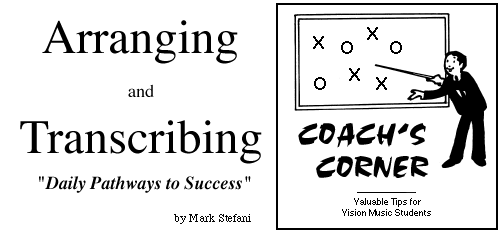


Sleepwell
By E. Ressel. Elizabethtown College.
Weight and height are connected with a straight line buy sleepwell 30caps visa, pointing to the body surface area in the center column (B). In nonintubated patients, a tube can be mounted on the bronchoscope to help nasotracheal intubation if this maneuver is deemed necessary (see Fig. After direct bronchoscopic examination is completed, a definitive diagnosis is made based on clinical, laboratory, and bronchoscopic FIGURE5 Direct bronchoscopy remains the gold standard diagnostic test for inha- lation injury. It is readily available and allows diagnosis and therapeutic lavage of soot and damaged epithelium. If it is performed nasally in an orally intubated patient, an endotracheal tube can be mounted with the bronchoscope to convert it to naso- tracheal intubation. Patients with inhalation injury are then started in the inhalation injury protocol (see below). After definitive assessment in the burn center (see Table 4), a final diagnosis regarding the burn wounds (extent and depth), accompanying injuries, and smoke inhalation injury is reached. At this point burn wounds should be covered with a clean burn wound dressing. Compressive dressings should be avoided, because they can induce further hypoperfusion and conversion of partial-thickness wounds to full-thickness. If the definitive treatment includes immediate burn wound excision, burns should be covered with Telfa clear (Kendall) or plastic film, while the patient is awaiting definitive sur- gery. When the treatment of choice of full-thickness burns is early burn wound excision in 72 h, after resuscitation is completed, burns can be treated either with 1% silver sulfadiazine (Flammazine, Silvadene) or cerium nitrate–silver sulfadiazine (Flammacerium) during the period between the accident and the definitive sur- gery. Patients are covered with plastic film or Telfa clear until definitive assessment by a senior surgeon is performed. Small superficial burns are usually treated with Mepitel (Monlicke) or any other semiocclusive method.
Ooishi T order sleepwell 30caps mastercard, Sugioka Y, Matsumoto S, Fujii T (1993) Congenital dis- is no longer possible, however, the energy expenditure location of the knee. Paley D, Catagni M, Argnani F, Prevot J, Bell D, Armstrong P (1992) knee extensors must exert compensatory muscle power Treatment of congenital pseudoarthrosis of the tibia using the or else an external extension moment can be generated Ilizarov technique. Or- hip extensors are used as compensators for maintaining thopäde 31:306–7 posture. Paterson DC, Simonis RB (1985) Electrical stimulation in the treat- ses can be used to preserve the dynamic stability of the ment of congenital pseudarthrosis of the tibia. Pellacci F, Montanari G, Prosperi P, Galli G, Celli V (1992) Lateral discoid meniscus: treatment and results. Arthroscopy 8: 526–30 Functional problems in the sagittal plane – such as 41. Räber D, Friederich NF, Hefti F (1998) 20 years follow-up after total hyperextension or a knee flexion contracture – are removal of lateral discoid meniscus in children. Since braces (Am) 80: 1579–86 that surround the knee or ankle foot orthoses only 42. Roach JW, Shindell R, Green NE (1993) Late-onset pseudarthrosis provide lateral stabilization, it is almost impossible of the dysplastic tibia. Rogala EJ, WynneDavies R, Littlejohn A, Gormley J (1974) Congeni- to influence flexion/extension movements, apart tal limb anomalies: frequency and aetiological factors. J Med Genet only effective in helping avoid knee hyperextension 11: 221–33 in stance. Rohren E, Kosarek F, Helms C (2001) Discoid lateral meniscus and the frequency of meniscal tears.
Small children also require dorsal spondylodesis in order to prevent further kyphosing during dorsal growth cheap 30 caps sleepwell. If a secondary kyphosis does occur, this may occasionally require surgical cor- rection. The affected section usually has to be straight- ened simultaneously from the ventral and dorsal sides. Although approximately 40% sustain a spontaneous fusion of the vertebrae, most patients do not have symp- toms according to a long-term follow-up study. The vertebral Changes to the upper cervical spine occur especially in body T10 is completely collapsed and a large prevertebral abscess is the polyarticular form of juvenile rheumatoid arthritis present ( Chapter 4. Despite the occasionally extensive radiographic changes of the cervical spine, patients gener- ally suffer few symptoms in this area. Radiographic inves- tigation of the cervical spine is therefore always indicated 3 in the polyarticular form. In particular, the orthopaedist should look for atlantoaxial instability, which may occa- sionally require atlantoaxial screw fixation. The status of the cervical spine should always be checked before operations as the risk of dislocation during intubation is not negligible. The most important complication of the polyarticu- lar form of juvenile rheumatoid arthritis is atlanto- axial instability, whereas iridocyclitis tends to occur in the oligoarticular type. In addition to problems affecting the cervical spine, sco- lioses can also occur in connection with juvenile rheu- matoid polyarthritis, although these are rarely severe enough to require treatment. Brace treatment is indicated in restricted cases, since rheumatic patients always suffer from osteoporosis, which would be further exacerbated by ⊡ Fig. This usually manifests itself on x-rays for only a few the patient’s twenties or thirties. But the disease can also months or years and subsequently disappears spontane- occur as early as the second decade in a small proportion ously (⊡ Fig.